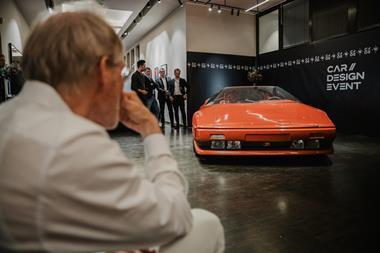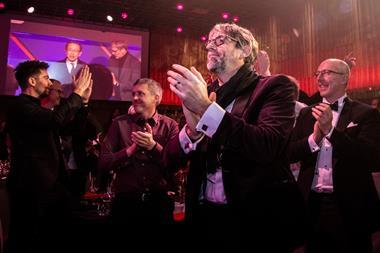Graduating students at Korea's Hongik University school of Art and Design have recently shown their work in the annual Design Degree Show in November. The exhibition included works from the graduating Senior students, a KIA Motor sponsored project, as well as a bicycle design project by Junior students.
Hongik University has a long history in industrial design education, with a large number of graduates employed in the design industry in Korea. Hongik University was established in Seoul, Korea in 1949, and is well known in Korea for it's art & design college.
The college of Fine Art & Design includes 11 departments; Industrial Design, Visual Communication Design, Metal Art & Design, Wood & Furniture design, Fine Arts, Oriental Painting, Fiber Arts, Sculpture, Ceramic, Printmaking and Art Science. The Industrial Design department includes 4 majors; Transportation, Product, Environmental and Interior Design.
The Industrial Design department accepts about 60 students each year. About 15 students take the transportation course as a major.
Hongik University's transportation course has become a major source of recruitment for automotive design studios in Korea and internationally, and is considered as one of the leading Korean design schools. It is estimated that more than half of the Korean car designers are Hongik university graduates.
Over the past ten years, the Hongik University Transportation Design Course has built up a highly qualified staff of teachers, who have experience in the car industry and who are graduates of schools such as the Royal College of Art. Hongik was the first Korean design college to start a course in automotive design.
The instructor is Professor Joo-hyun Chung, who graduated from Hongik University before continuing to study at the Royal College of Art, graduating in 1990. Chung worked as the Chief of Hyundai and Daewoo motors from 1980 to 1993. He has been a professor of the Industrial Design department since 1993, and is now the Dean of the Industrial design department in Hongik University.
The Design Degree show, this year entitled "Value, Venture, Vision", included work from Transport Design, Consumer Product Design, and Environment Design.
The senior students presented their final course projects with 1:4 scale CNC milling hard models, lay-out drawings, preliminary concept sketches, and CDRS or ALIAS renderings.
The next-generation Carnival (Sedona) based 'Fusion Concept' car design project, carried out in collaboration between Hongik University and Kia Motor, acts as a useful resource for Kia in the development of future models of the Carnival, the best selling family MPV in Korea.
The third year Transportation students were also showing their work, a project looking at various types of bicycles. The design concepts had to represent a bicycle that could realistically be on the road in near future. Students were encouraged to include material and structure technologies not yet available but which could be developed.
The second and third year of the Transportation Design course are taught in conjunction with the Industrial design course, and in the 4th year students begin to specialize in Transportation Design.
The courses supports digital 3D modelling tools like CDRS and Softimage. The students in Industrial Design also have the opportunity to study entertainment design using these tools.
During this semester the students develop their design projects from 2D to 3D using digital models rather than clay, using various computer software, modelling, packaging studies, renderings and animations. The emphasis on digital design techniques reflects the changing nature of the automotive design process.
The school's rapid prototyping facility, allows the students to have their models milled out using the CNC mill. This offers an interesting and promising alternative to traditional model making, which is why this methodology is being strongly implemented in the school's curriculum.
In the first four semesters of the HongIk university Transportation design course fundamental skills are developed, including concept sketching and three dimensional rendering. Principles of ergonomics, aerodynamics, research into new energy sources, and computer applications to the design process are explored.
In later semesters students simulate professional activity by completing projects sponsored by Korean car makers. Students collaborate with designers from these companies, who guide and critique their works.
Related sites: Hongik University
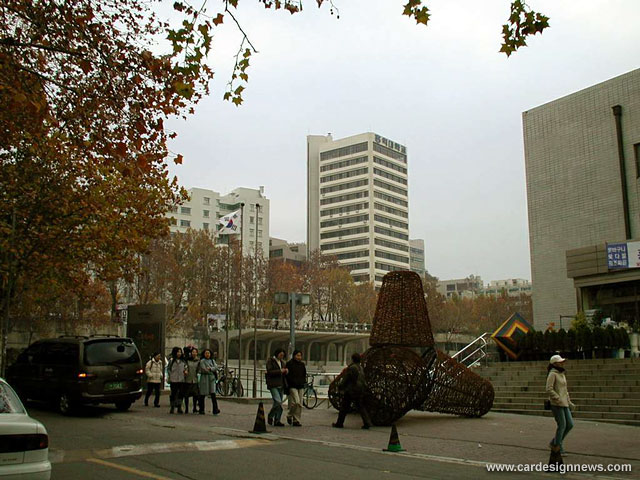
Hongik University

Fusion - Minjae Lee, Minkyu Kang
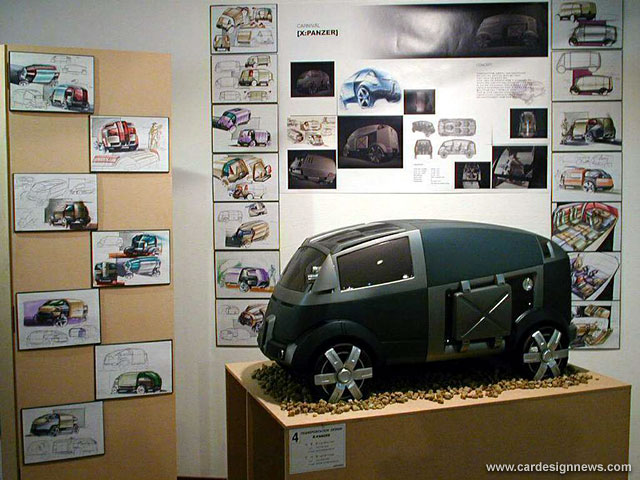
Panzer - Unhan Lee, Nahyung Jun
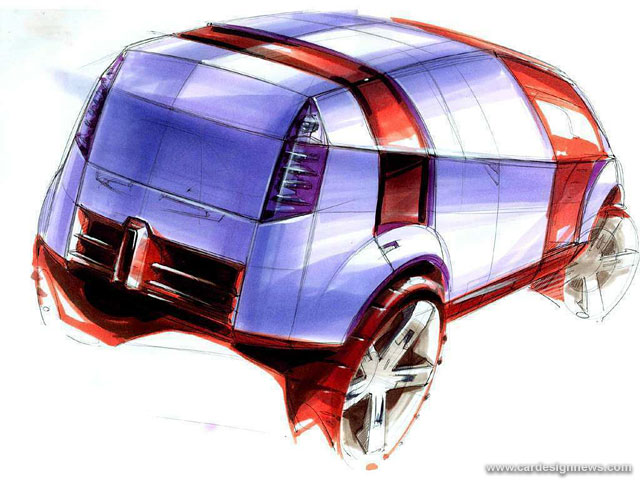
Panzer - Unhan Lee, Nahyung Jun
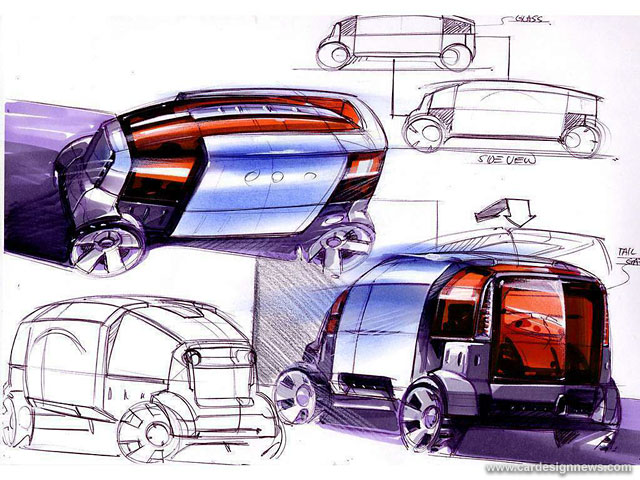
Panzer - Unhan Lee, Nahyung Jun

Maxis - Illjun Gean
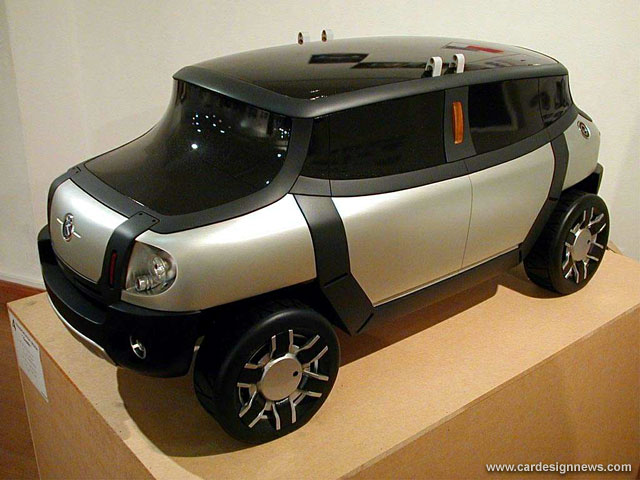
Coodo - Ilhun Yoon, Jingyu Seo

Arc - Yunggeun Kim, Jinsuk Ryu
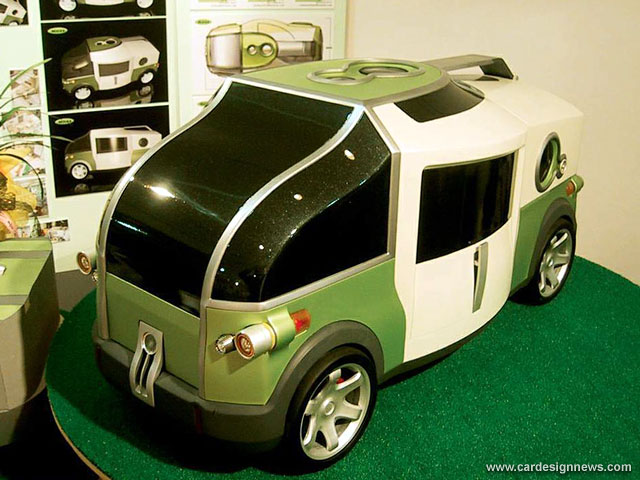
MOSS (My Own Special Space) Kyung Jung Lim, Bung Huk Jang, Ji Youn Lheem
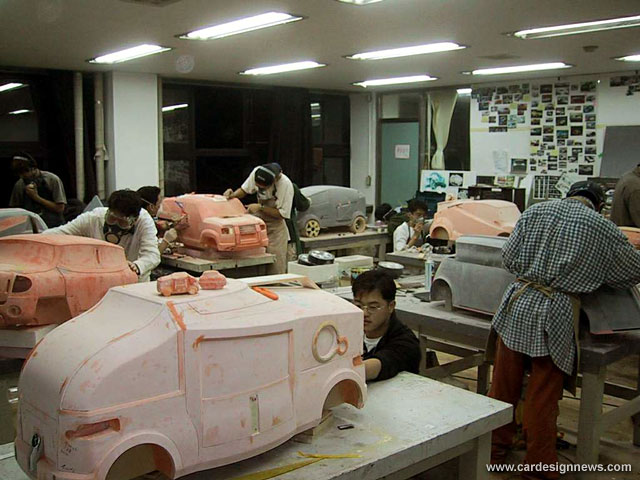
Students detailing their fiberglass scale models



































